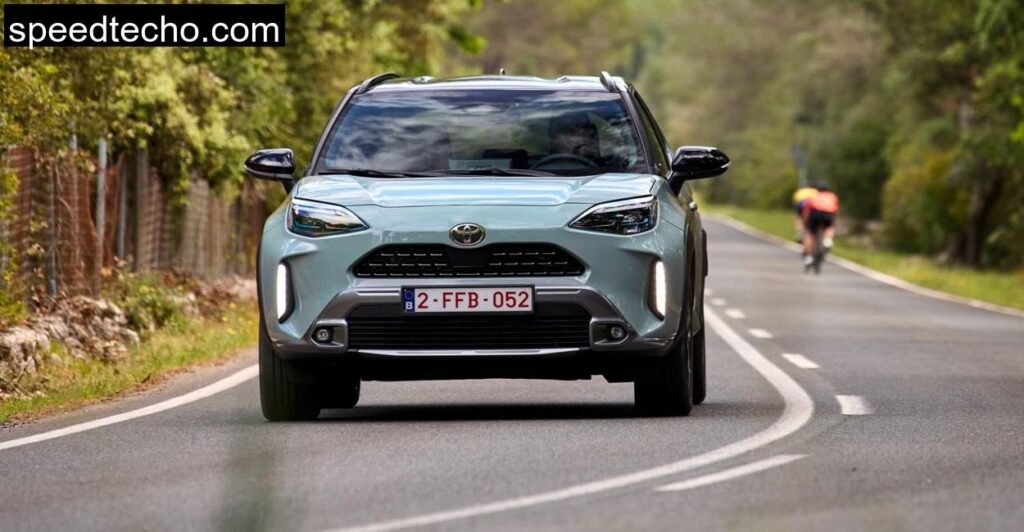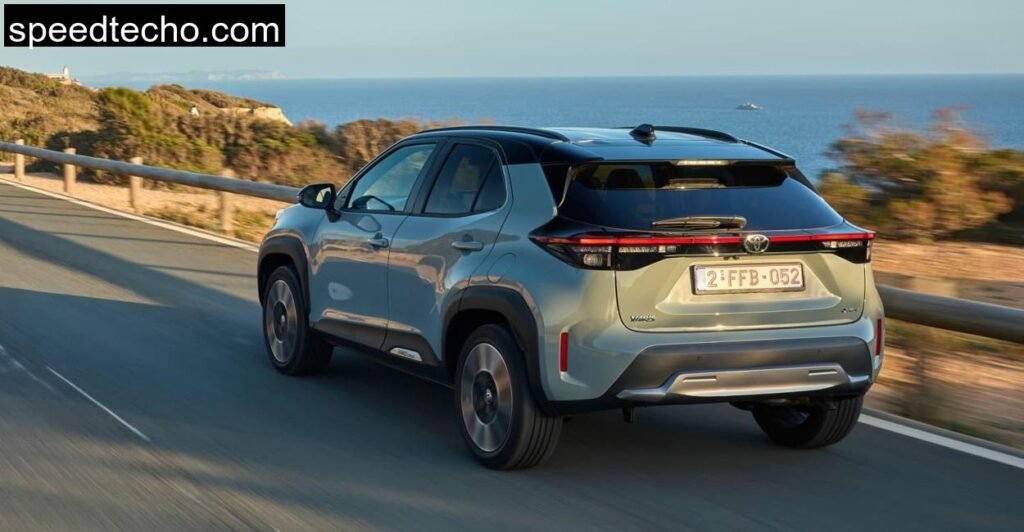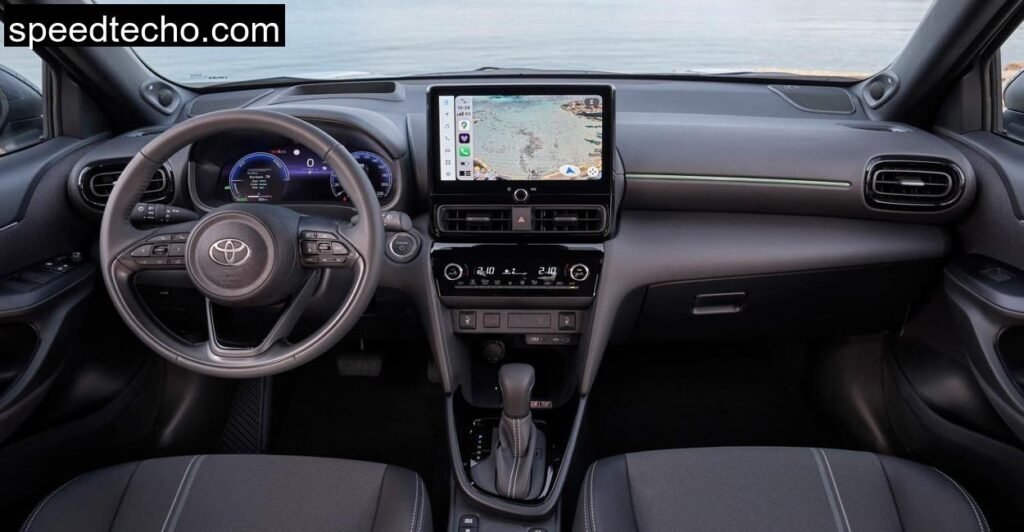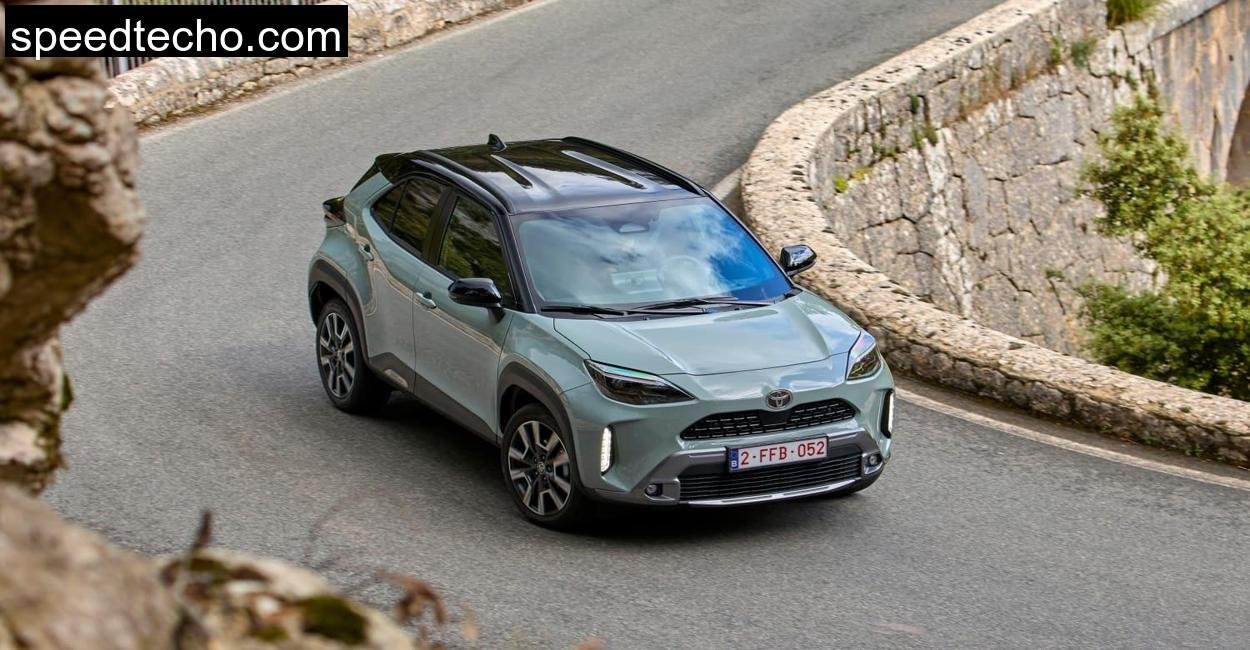Hybrid, But with a Punch: Understanding the Powertrain
Let’s start with the hardware. The car I had was the updated 130 hp version of the Yaris Cross Hybrid, the one with Toyota’s new hybrid architecture. On paper, it didn’t look like much had changed from the older 116 hp variant. Both use the same 1.5, liter three, cylinder petrol engine and electric motor, but in the 130 hp version, Toyota has given it a higher, performance electric generator and a new power control unit. That results in more torque (185 Nm vs 141 Nm) and a slightly quicker 0, 100 km/h sprint, 10.7 seconds compared to 11.2 seconds.
But in the Hainleite, that half, second was noticeable. You feel it when you push out of a hairpin in “Power” mode. The torque fills in nicely between 30 to 80 km/h, which is exactly the speed zone for mountain twisties. It’s not a performance SUV, of course, but it never felt breathless. And most crucially, the engine didn’t whine like older Toyota hybrids. That alone makes a huge difference to how premium this small SUV now feels.
The e, CVT transmission also deserves credit. It keeps the transitions between petrol and electric imperceptible and doesn’t over, rev the engine under sudden acceleration. Whether I was coasting silently through a downhill village or gunning it uphill, the hybrid system felt smooth and natural.
How It Drives: Comfort, Composure, and Commuter DNA
Driving the Yaris Cross on winding B, roads and steep inclines was an eye, opener. The steering has a light, almost disconnected feel at center, which took some getting used to, especially when trying to keep the nose pointed precisely through tight corners. But it’s never vague, and in urban traffic, that lightness feels like a blessing.
The suspension is what surprised me most. Toyota’s engineers have struck a near, perfect balance for this car’s mission profile. It doesn’t float like a Corolla Touring Sports on the highway, nor does it crash like a rigid hot hatch. Over cobbled village streets, forest patches, and abrupt dips, it stayed composed. There’s a bit of firmness on sharper bumps, but it’s controlled and mature.
On the longer sections through Grosslohra and back into Nordhausen, the Yaris Cross cruised effortlessly. Wind noise was impressively low thanks to thicker windows and improved insulation in the facelifted version. At 100, 120 km/h on the Autobahn stretch near Bleicherode, I could hold a phone conversation without raising my voice. That’s not something I expected in a car under 30 grand.

Interior Practicality: It’s a Small SUV, Not a Big Promise
You won’t forget that this is a compact SUV. At 4.18 meters long, the Yaris Cross parks like a city car but aims to offer a family, friendly cabin. Up front, it mostly succeeds. The seating position is higher than in the standard Yaris, with great all, round visibility. You get that SUV feeling without needing a step ladder to get in.
The cabin feels snug but not tight. I’m 6’1″, and I could set the driver’s seat just right without kneecapping the passenger behind me. Rear legroom is acceptable for kids or short hops with adults, but not something you’d want for long road trips unless you’re under 1.75 meters tall. Toyota didn’t bother with sliding or reclining rear seats, which could’ve made it more flexible.
The boot, though, is where it redeems itself. In the front, wheel, drive version I tested, the 397, liter trunk swallows weekend luggage, groceries, and even a folded stroller without complaint. Drop the rear seats (which split 40:20:40, a thoughtful touch), and you can extend that to over 1,000 liters. The double floor adds loading flexibility, and the tailgate, optional with power function, makes life easier when your hands are full.
Real, World Efficiency: Better Than You’d Think
Efficiency is what hybrid Toyotas are known for, and the Yaris Cross doesn’t disappoint. Over two days, I covered around 340 kilometers, split between mountain routes, small towns, and a brief highway section. My average consumption was 4.7 liters per 100 km. On city, only legs, I managed to dip as low as 3.9 l/100 km, confirmed by the onboard display and backed up by the ADAC’s own numbers.
The regenerative braking is subtle and doesn’t feel synthetic. You don’t get the fake “one, pedal” feeling like in some EVs; instead, it feels like a naturally slowing car, just with less brake usage. The tiny 0.8 kWh battery can only power the car for about 1.5 kilometers at speeds below 50 km/h, but it does make a difference in urban efficiency and stop, and, go traffic. That’s the whole charm of Toyota’s full, hybrid system, no plugging in, no range anxiety, just seamless fuel, saving tech.

Tech and Usability: Simple, Thoughtful, Functional
Inside the Yaris Cross, Toyota has wisely chosen clarity over complexity. The infotainment screen is big enough, well, positioned, and now comes with much better responsiveness. The climate control uses proper buttons, no distracting touchscreen swipes required. And if you go for the higher trims, you even get a real head, up display that projects onto the windshield. Not a plastic panel. A real HUD. That’s a small SUV punching above its weight.
Toyota Safety Sense is standard, offering adaptive cruise control, emergency braking, and lane, keeping assist. All of them work well, except for the traffic sign recognition, which got confused more than once in the Hainleite’s variable speed zones. Still, it never felt like a tech gimmick, it all blended into the drive.

Conclusion: A Surprisingly Capable Everyday SUV
After two full days of driving through the hills and valleys of the Hainleite, the Toyota Yaris Cross Hybrid left a deeper impression than I anticipated. It’s not flashy, it’s not outrageously powerful, and it doesn’t try to overpromise. What it does deliver, though, is rare: honest efficiency, mature ride quality, clever usability, and a cabin that feels just right for its size.
For small families, city commuters, and weekend explorers who want the practicality of an SUV without the fuel costs and size of one, the Yaris Cross makes perfect sense. And now, with the 130 hp hybrid version, it’s got just enough performance to feel competent in the hills, not just in traffic.
How efficient is the Yaris Cross hybrid system in real, world driving?
Expect around 5.6 liters per 100 km under mixed driving conditions. It’s particularly efficient in city and light country road driving where the electric motor takes more load.
Does the Yaris Cross offer all, wheel drive?
Yes, the AWD, i system is available but only with the 130 hp variant, adding electric drive to the rear axle for better traction in slippery conditions.
How comfortable is the Yaris Cross for passengers?
Front seating is comfortable with good headroom, but the rear seats are somewhat tight on width and legroom , typical for a compact SUV.






